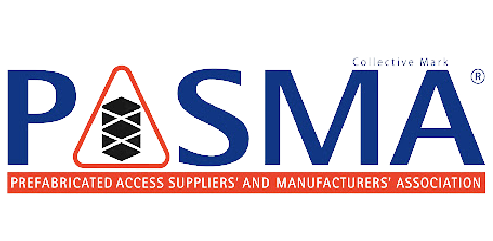Painting your kitchen cupboards is a great way to refresh your space. It’s much cheaper than a full remodel. But, before picking up a paintbrush, it’s essential to ask yourself: What is the best kitchen cupboard paint?
Picking the right paint matters. It can lead to a strong, lasting finish or a letdown. In this guide, we’ll look at the best paints for kitchen cupboards. And Reasons to opt for professional Kitchen spraying services for unmatched finishes! We’ll cover the steps for a great finish and share tips for a long-lasting paint job.
What Is the Best Kitchen Cupboard Paint? – A Quick Answer
The best paint for kitchen cupboards is usually a strong, high-quality option. It needs to handle frequent use and cleaning well. Oil-based or acrylic paints with a satin or semi-gloss finish are popular choices. These paints offer a hard, smooth finish. They resist moisture, stains, and scratches, which are common in kitchens. To get a lasting finish, pick a paint made for cabinets or furniture.
Types of Paint for Kitchen Cupboards

When asking, “What is the best kitchen cupboard paint?” it’s crucial to know which types of paint are best suited for this purpose. Here are the top options:
1. Oil-Based Paints
Oil-based paints have been a favorite for kitchen cupboards for many years. They provide a smooth, durable finish that is easy to clean. Oil-based paints also offer a glossy appearance, which adds to the cabinet’s aesthetic appeal. They have some downsides, like a longer drying time and stronger fumes. Many homeowners still choose oil-based paints for their kitchen cupboards. They like the better finish and durability.
2. Acrylic Paints (Water-Based)
Acrylic paints are another popular choice for kitchen cupboard painting. These paints are water-based, making them easier to clean and less harmful to the environment. Acrylic paints dry quickly, making them a convenient option for those who don’t want to wait too long for their cupboards to be ready. They are also less likely to yellow over time compared to oil-based paints. But, even though they are tough, they might not give the same shine or smooth finish as oil-based paints.
3. Chalk Paint
For a more rustic or shabby-chic look, chalk paint is a great option. It requires less preparation than other paints and adheres well to most surfaces. Chalk paint chips and stains more easily than oil-based or acrylic paints. So, it might not be the best pick for busy kitchen areas. To extend the lifespan of chalk paint, you should apply a protective topcoat.
4. Enamel Paint
Enamel paint is another highly durable option for kitchen cupboards. It provides a hard, glossy finish that resists moisture and stains. Enamel paint is often used on surfaces that need extra protection, such as cupboards exposed to water and grease. It’s easy to clean and very durable. That’s why many people choose it for kitchen makeovers.
5. Cabinet-Specific Paint
Manufacturers plan cabinet-specific paints to meet the needs of kitchen cupboards. These paints are durable and resist stains. They also stick well to cabinet surfaces. They come in various finishes, including matte, satin, and high-gloss, and are available in a wide range of colors. These manufacturers make these paints to handle the daily wear and tear in kitchens.
How to Choose the Right Paint for Your Kitchen Cupboards

So, what is the best kitchen cupboard paint? The answer depends on a few things. First, consider the state of your cabinets. Next, think about the finish you want. Lastly, how much time and effort can you put in? Here’s how to choose the right paint:
- Consider the Material of Your Cabinets: If your kitchen cupboards are made of wood, you can choose either oil-based or acrylic paints. For laminate or melamine cupboards, make sure to use a primer first and opt for a paint designed for smooth surfaces.
- Think About the Finish: A satin or semi-gloss finish is ideal for kitchen cupboards because it’s both durable and easy to clean. Glossy finishes are great for a high-end look, while matte finishes are better for a subtle, understated appeal.
- Decide on Durability: Oil-based paints are more durable and resistant to wear and tear, making them a good choice for high-traffic kitchens. But, if you’re looking for a more environmentally friendly option, acrylic paint is also a good choice.
- Color: Lighter colors like whites, grays, and pastels are timeless, while bolder colors can add character and style to your kitchen. make sure to choose a color that complements the overall theme of your home.
Preparation for Painting Kitchen Cupboards
Before you start painting, preparation is key. Here are the essential steps you need to take:
- Clean the Cupboards: Wash the surfaces thoroughly to remove grease, dirt, and any existing grime. Use a degreaser to ensure the paint adheres well.
- Sand the Surfaces: Lightly sand the cupboards to smooth out any imperfections and create a rough surface for the paint to stick. If you have glossy surfaces, sanding is especially important.
- Remove Hardware: Take off the cupboard doors, knobs, and handles. This will ensure that you can paint every inch of the cupboard without any obstacles.
- Prime the Surfaces: Use a primer to prepare the surface, especially if you’re painting over a dark color or a laminate surface. The primer helps the paint adhere better and provides a smoother finish.
Painting Your Kitchen Cupboards
Once you’ve completed the preparation steps, you’re ready to begin painting your kitchen cupboards. Here’s how to achieve a professional finish:
- Apply Thin Coats: Whether you’re using oil-based, acrylic, or enamel paint, apply thin, even coats. Thin layers will prevent drips and streaks, ensuring a smooth and flawless finish.
- Use a Quality Paintbrush or Roller: A high-quality paintbrush or foam roller will help you achieve a smooth finish without visible brush marks.
- Allow Time to Dry: Let each coat dry completely before applying the next one. This will prevent smudging and ensure that the paint adheres properly.
- Reassemble the Cupboards: Once the paint has dried, reattach the cupboard doors and hardware. Give everything one last check to ensure it looks perfect.
Tips for a Long-Lasting Finish
To ensure that your kitchen cupboard paint job lasts for years, here are a few tips to follow:
- Regular Cleaning: Clean your cupboards regularly to remove any dirt or grease. Use mild soap and water, avoiding harsh chemicals that could damage the paint.
- Touch Up When Needed: Over time, some areas may start to show signs of wear. Touch up the paint as needed to keep your cupboards looking fresh.
- Consider a Protective Topcoat: If you want extra durability, apply a clear topcoat to protect the paint from scratches and stains.
Why Professional Services Matter?
When it comes to giving your kitchen a fresh new look, opting for UPVC spray painters is a smart and stylish choice. Instead of replacing your cabinets, UPVC spray painting allows you to completely transform their appearance at a fraction of the cost. These professionals use high-quality, durable coatings that bond seamlessly to surfaces, offering a smooth, factory-like finish. With a wide range of colors and finishes available, UPVC spray painters can help you achieve a modern, refreshed kitchen without the mess and expense of a full renovation. It’s quick, cost-effective, and delivers stunning results.
Conclusion
In conclusion, when asking “What is the best kitchen cupboard paint?” the answer depends on several factors, including durability, ease of use, and finish. Oil-based, acrylic, and enamel paints are great for a smooth, long-lasting finish on kitchen cupboards. With good prep and careful painting, you can make your kitchen look fresh and beautiful for years.
For great results, contact pros like UPVC Spray Painters. They can give your kitchen cupboards a perfect finish. With the right tools and techniques, you’ll be able to transform your kitchen with ease.
Frequently Asked Questions
- Can I paint my kitchen cupboards without sanding them?
While sanding is not absolutely required, it plays a crucial role in ensuring the paint adheres well to the surface. Skipping this step can lead to uneven paint application, poor adhesion, and peeling over time. Light sanding makes the surface rough. This helps the paint stick better. As a result, you get a smoother and longer-lasting finish.
- How long does it take for kitchen cupboard paint to dry?
Drying times vary depending on the type of paint you use. Oil-based paints typically require 6 to 8 hours of drying time between coats, while acrylic paints dry more quickly, often within 1 to 2 hours. It’s important to let the paint cure for 24 to 48 hours. This helps prevent smudging and ensures the surface is fully hardened before heavy use.
- Can I use chalk paint on my kitchen cupboards?
Chalk paint is a popular option for giving kitchen cupboards a vintage or shabby-chic look. However, it is not as durable as oil-based or acrylic paints. Chalk paint sticks to most surfaces without sanding. However, it can chip or stain more easily, especially in busy areas like the kitchen. If you choose chalk paint, be sure to seal it with a protective wax or clear coat for added durability.
- How do I clean my painted kitchen cupboards?
To clean your painted kitchen cupboards, use a mild soap solution or a gentle cleaner with a soft cloth to wipe away dirt and grease. Skip rough cleaning tools like scrubbing pads and strong chemicals. They can harm the paint’s finish. Cleaning regularly keeps the cupboards looking nice. Always use gentle, non-abrasive cleaners.
- How can I prevent the paint from chipping on my kitchen cupboards?
To prevent chipping, use high-quality, durable paint that’s designed for cabinetry. A protective topcoat, like polyurethane or clear acrylic, adds a layer of defense against scratches and stains. Also, regular maintenance helps. Gentle cleaning and touch-ups will keep the paint looking fresh. This care can extend the finish’s life.








